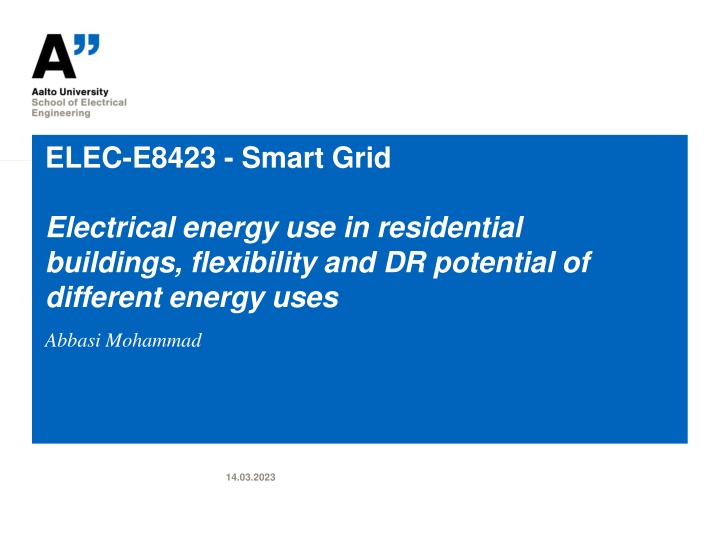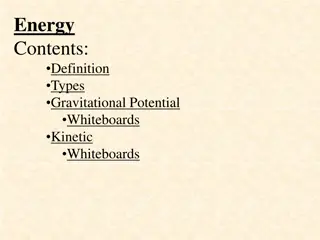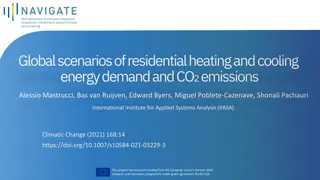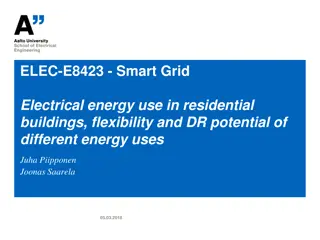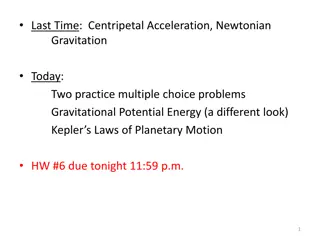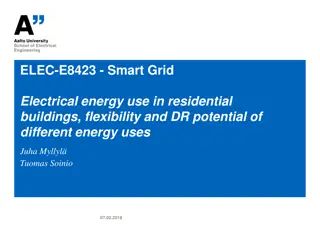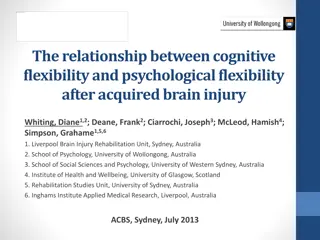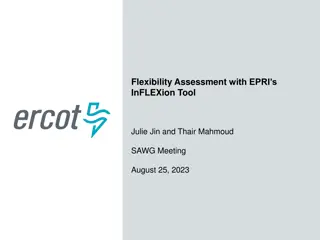Flexibility and DR Potential in Residential Energy Use
This study explores the demand response (DR) potential of different energy uses in residential buildings, focusing on smart grid electrical energy management. It delves into the benefits of DR programs, challenges, and conclusions to enhance grid efficiency, reliability, and economic aspects while lowering electricity prices and reducing environmental impact.
Download Presentation

Please find below an Image/Link to download the presentation.
The content on the website is provided AS IS for your information and personal use only. It may not be sold, licensed, or shared on other websites without obtaining consent from the author.If you encounter any issues during the download, it is possible that the publisher has removed the file from their server.
You are allowed to download the files provided on this website for personal or commercial use, subject to the condition that they are used lawfully. All files are the property of their respective owners.
The content on the website is provided AS IS for your information and personal use only. It may not be sold, licensed, or shared on other websites without obtaining consent from the author.
E N D
Presentation Transcript
ELEC-E8423 - Smart Grid Electrical energy use in residential buildings, flexibility and DR potential of different energy uses Abbasi Mohammad 14.03.2023
Introduction Demand response Residential electricity consumption DR potential of different energy uses DR programs Challenges Conclusions 14.03.2023 Page 2
Demand Response (DR) What is DR? (Definition by the European Commission) voluntary changes by end-consumers of their usual electricity use patterns in response to market signals (such as time-variable electricity prices or incentive payments) or following the acceptance of consumers' bids (on their own or through aggregation) to sell in organized energy electricity markets their will to change their demand for electricity at a given point in time. [1] Why DR? To maintain power balance: Traditionally, supply is adjusted to match demand using capacity reserves. An alternative approach is to adjust demand to match supply by using the potential of demand-side resources. 14.03.2023 Page 3
Demand Response (DR) Benefits [2,3] Grid Efficiency o Reliability o Economic o Lower price of electricity Environmental o Reducing greenhouse gases emissions 14.03.2023 Page 4
Residential Electricity Consumption Finland Household Electricity Consumption in 2021 [4] GWh 11,428 9,143 1,482 790 6,871 1,233 2,458 24262 Share 47.10 % 37.68 % 6.11 % 3.26 % 28.32 % 5.08 % 10.13 % Heating of spaces Household appliances Lighting Cooking Other electrical equipment Heating of saunas Heating of domestic water Total Heating of domestic water, 10.13% Heating of saunas, 5.08% Heating of spaces, 47.10% Household appliances, 37.68% 14.03.2023 Page 5
Load Categorization Based on DR [5] Figure. Load categorization according to its degree of control and annual electricity consumption, data from Portugal 1. Non-controllable loads 3. Interruptible loads 2. Re-parameterizable loads 4. Shiftable loads 14.03.2023 Page 6
An Example: HVAC Potential [6] (a) global thermal zone temperature reset; (b) pre-cooling Figure. Response characteristics of HVAC loads 14.03.2023 Page 7
DR Potential of Residential Loads and Future [7] Impact of DR Categories in 2030 and 2050 in Nordic Countries Flexible Loads Annual Electricity Consumption in Nordic Countries 14.03.2023 Page 8
DR Programs DR schemes [8,9] : Time-of-Use (ToU) Price-based: Time-of-use Critical Peak Pricing Real Time Pricing Incentive-based: Critical Peak Rebate Direct Load Control o o o Critical-Peak Pricing o o Real-Time-Pricing Type of control [10]: Centralized Distributed Hierarchical o o o Figure. Time varying price schemes 14.03.2023 Page 9
Challenges [9] Familiarity and trust: Unfamiliarity with demand response and concerns around privacy and autonomy can contribute to mistrust. Modeling customers behavior and participation: User routines and could influence their participation in DR. Complexity and effort to respond and shift demands: The level of complexity and effort associated with demand response can affect consumer engagement. 14.03.2023 Page 10
Conclusions Demand response is voluntary changes by end-consumers of their usual electricity use patterns, according to the DR schemes. Residential loads have great potential for DR, and the degree of control reveals the potential of different energy use for DR. DR in residential buildings faces challenges such as trust and complexity and effort. 14.03.2023 Page 11
Source material used [1] Incorporating demand side flexibility, in particular demand response, in electricity markets, EuropeanCommission, 2013. [Online]. Available: https://energy.ec.europa.eu/system/files/2014-10/com_2013_public_intervention_swd07_en_0.pdf [2] M. S. Behera and S. K. Jain, "A review on different techniques of demand response management and its future scopes," in 2021 International Conference on Control, Automation, Power and Signal Processing (CAPS), 2021: IEEE, pp. 1-8. [3] P. Pinson and H. Madsen, "Benefits and challenges of electrical demand response: A critical review," Renewable and Sustainable Energy Reviews, vol. 39, pp. 686-699, 2014. [4] Energy consumption in households - Statistics Finland. [Online]. Available: https://stat.fi/en/statistics/asen [5] A. Soares, . Gomes, and C. H. Antunes, "Categorization of residential electricity consumption as a basis for the assessment of the impacts of demand response actions," Renewable and Sustainable Energy Reviews, vol. 30, pp. 490-503, 2014. [6] Z. Luo et al., "Demand flexibility of residential buildings: definitions, flexible loads, and quantification methods," Engineering, 2022. [7] J. Kirkerud, N. O. Nagel, and T. Bolkesj , "The role of demand response in the future renewable northern European energy system," Energy, vol. 235, p. 121336, 2021. [8] H. T. Haider, O. H. See, and W. Elmenreich, "A review of residential demand response of smart grid," Renewable and Sustainable Energy Reviews, vol. 59, pp. 166-178, 2016. [9] B. Parrish, P. Heptonstall, R. Gross, and B. K. Sovacool, "A systematic review of motivations, enablers and barriers for consumer engagement with residential demand response," Energy Policy, vol. 138, p. 111221, 2020. [10] D. S. Callaway and I. A. Hiskens, "Achieving controllability of electric loads," Proceedings of the IEEE, vol. 99, no. 1, pp. 184-199, 2010. 14.03.2023 Page 12
